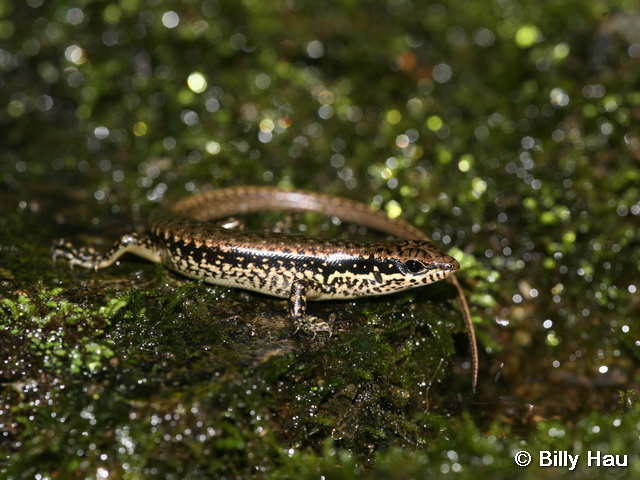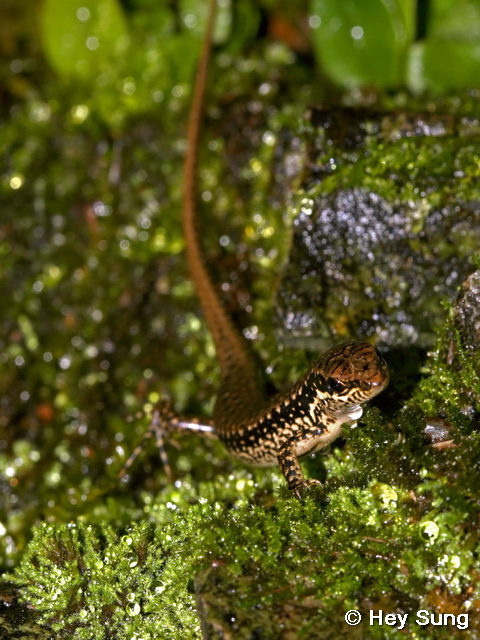Sphenomorphus incognitus (Thompson, 1912)
Brown Forest Skink 股鱗蜓蜥
Suborder
Lacertilia 蜥蜴亞目
Back bronze, speckled with dark and light spot on two sides, with a black dorso-lateral stripe run through the eye and hind leg.
Highly resembles Indian Forest Skink (S. indicus). The two species have to be separated with care.
1) S. incognitus is slightly larger than S. indicus in snout-vent length, but it is not a good character for separating juvenile.
2) The only clear-cut difference is the presence of enlarged scale at the back of the thigh in S. incognitus.
3) Upper edge of the dorso-lateral stripe is jagged in S. ingonitus, while in S. indicus is smooth.
4) Dorsally, S. incognitus is bronze speckled with light and dark spots, but S. indicus is more uniformly brown.
5) Underside whitish in S. incognitus, while creamy yellow in S. indicus.
Both species has smooth scales.
The two species were confused in the past. Early record of the two species from Hong Kong must be treated with caution.
The picture of S. indicus in Karsen et al (1998) is actually S. incognitus.
Reference: Lau, M.W.N. 2005. The occurrence of Sphenomorphus incognitus in
Hong Kong with notes on its diagnostic features and distribution. Porcupine! 32:9-10
Sympatric with S. indicus, both prefer good forest.
Two species separated in microhabitat.
S. incognitus prefers riparian forest, often seen basking on stream bank.
Different from S. indicus, which frequently found inside forest and on forest path, among leaf litter.
Is preyed upon by Chinese Mountain Snake (Sibynophis chinensis).
Occurs in South China including Taiwan.




